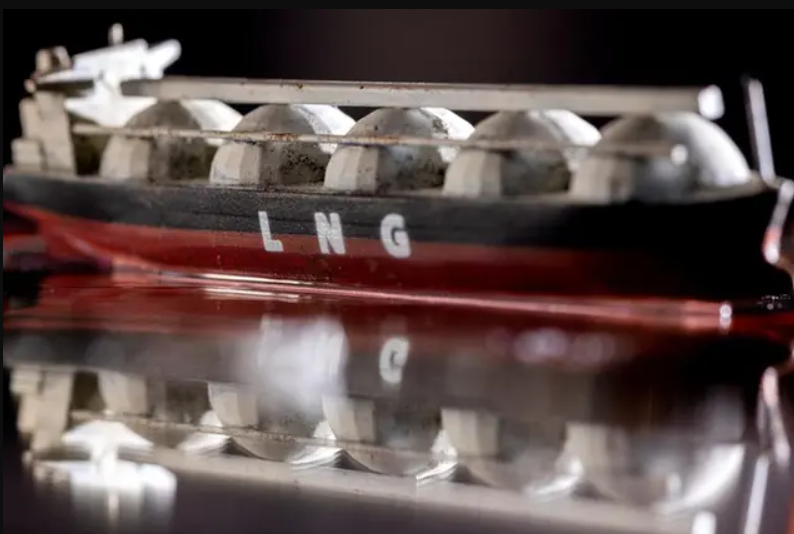
The disruption caused by lockdowns to manage the coronavirus pandemic and the enormous exit wave of illnesses when they were removed precipitously decreased China’s purchases of liquefied natural gas (LNG) in 2022.
When the pandemic subsides, rebounding industry and service sector activity will raise gas consumption and potentially reduce Europe’s LNG supply by winter 2023/24.
However, the rise in imports may be smaller than some experts predict because local gas output is expanding rapidly and the government has largely completed the transfer of urban populations to natural gas.

GAS IMPORT DYNAMICS
According to data from the General Administration of Customs, China’s LNG imports decreased by 16 million tonnes (-20%) between 2021 and 2022.
It was just the second occasion since 2006, when the nation first began importing LNG, when imports were lower than the previous year.
Decreased LNG imports were somewhat offset by an increase of 4 million tonnes (+9%) in Russian and Central Asian pipeline gas.
In the first two months of this year, LNG and pipeline imports remained modest, with any comeback not anticipated until later in 2023.
Before expanding imports and restocking storage, China’s LNG consumers would likely wait for prices to fall.
Even if imports finally increase, the comeback may be limited due to the nation’s efforts to diversify its supply sources by expanding local production and pipeline imports.
Due to high pricing and government measures to reduce dependency on imports, China’s domestic gas output grew by 9 million tonnes (+6%) in 2022 compared to 2021.
NATURAL GAS SWITCH
Concurrently, the distribution of natural gas to urban residential customers and the conversion of existing consumers from coal gas and bottled liquefied petroleum gas (LPG) have been significantly accomplished.
According to the National Bureau of Statistics, gas was delivered to 98% of urban dwellers by the end of 2021, an increase from 92% in 2011 and 60% in 2001. (NBS).
548 million urban dwellers have access to gas in 2021, up from 368 million in 2011 and 216 million in 2001. (“China statistical yearbook”, NBS, 2022).
Yet, the number of inhabitants served with natural gas has increased even more rapidly as utilities have converted millions of houses from bottled LPG, produced coal gas, and gasworks gas to natural gas.
By the end of 2021, the number of urban dwellers supplied with natural gas had increased to 442 million from 190 million in 2011 (a compound annual growth rate of over 9%).
More than 41 billion cubic metres of gas were provided to urban homes in 2021, up from 13 billion cubic metres in 2011 (a compound annual growth rate of 12%).
In contrast, the number of urban people supplied with gas produced from coal in a gasworks decreased by 16% each year from 27 million in 2011 to fewer than 5 million in 2021.
More than half of the remaining users of gasworks gas resided in the province of Liaoning (2,4 million), while lesser numbers resided in Sichuan, Jilin, Guangxi, Heilongjiang, Shanxi, Gansu, and Inner Mongolia.
In 2021, the total volume of gasworks gas provided to residential consumers had decreased to 430 million cubic meters from 2.4 billion cubic meters in 2011 (a compound yearly reduction of 16 percent).
In 2021, over 102 million urban dwellers still used bottled LPG, but this was down from 161 million in 2011 (a compound annual drop of 5%).
Most provinces still have a few million urban people that use LPG, with the biggest concentrations in Guangdong (26 million), Zhejiang (11 million), and Fujian (11 million) (5 million).
40% of urban inhabitants in Guangdong, 37% in Fujian, 33% in Zhejiang, and 25% in Jiangxi continue to use LPG, compared to only 9% in Hebei, the province that surrounds Beijing and Tianjin.
From 2011 to 2021, the amount of LPG supplied to homes decreased from 6.3 million tonnes to 4.9 million tonnes.
PIPELINES NOT LNG
The switch from LPG and especially gasworks gas has accelerated natural gas usage during the past decade.
However, the transition is already virtually complete for coal gas and well started for LPG, indicating that residential use of natural gas is expected to increase at a slower rate in the future.
In addition, a growing proportion of gas is projected to be transported by pipeline from Russia and Central Asia, further restricting the rise in demand for LNG.
The Power of Siberia pipeline already transports gas from Russia to the north and northeast of China, but additional transmission capacity is now being developed to expand supply to the Lower Yangtze area by 2025.
Additional transmission capacity will alleviate the regional gas scarcity in Zhejiang, Fujian, Jiangsu, and Shanghai, where 25 million households still relied on LPG in 2021.
After the expansion is complete, it will facilitate the conversion of more LPG customers to natural gas; however, these consumers will be supplied with pipeline gas, not LNG.
